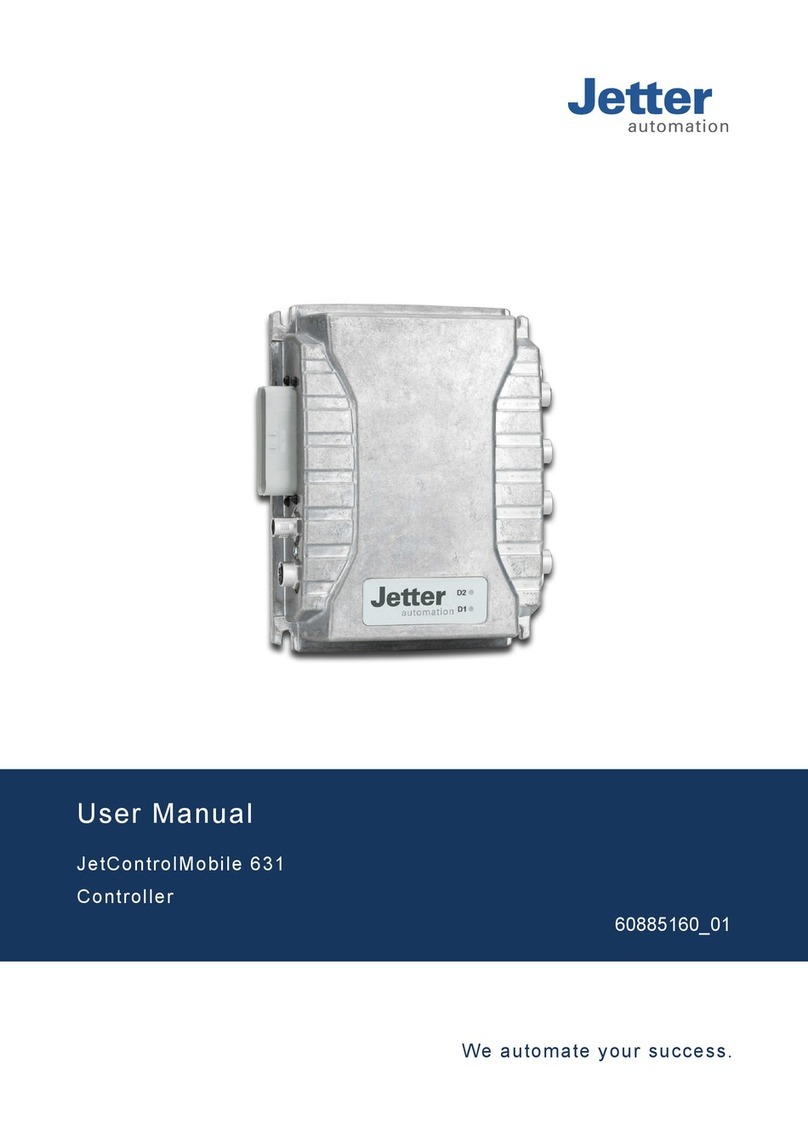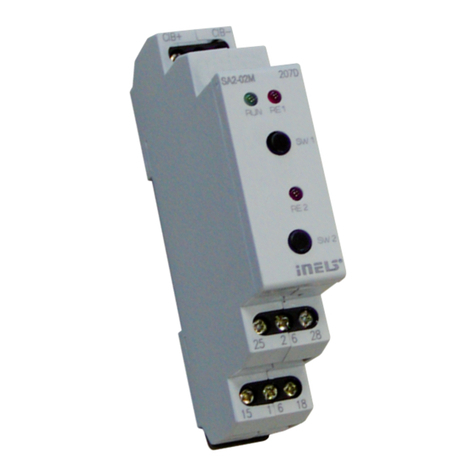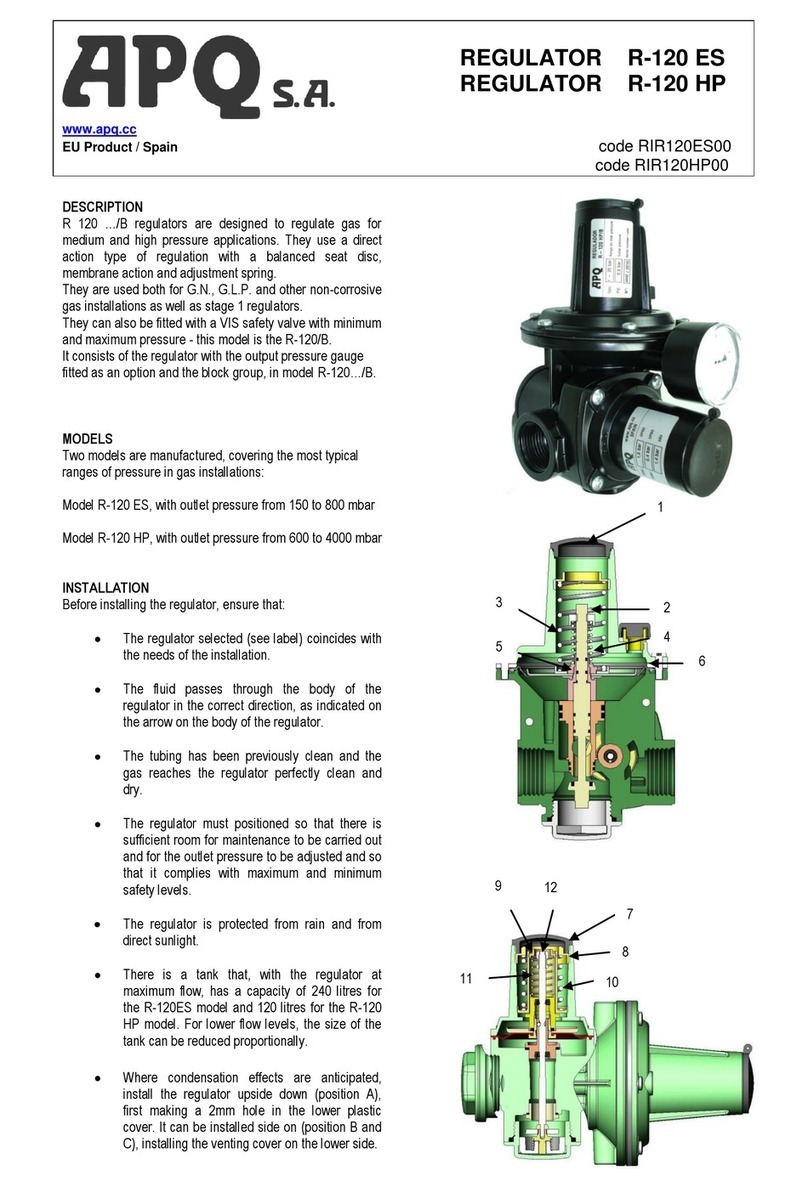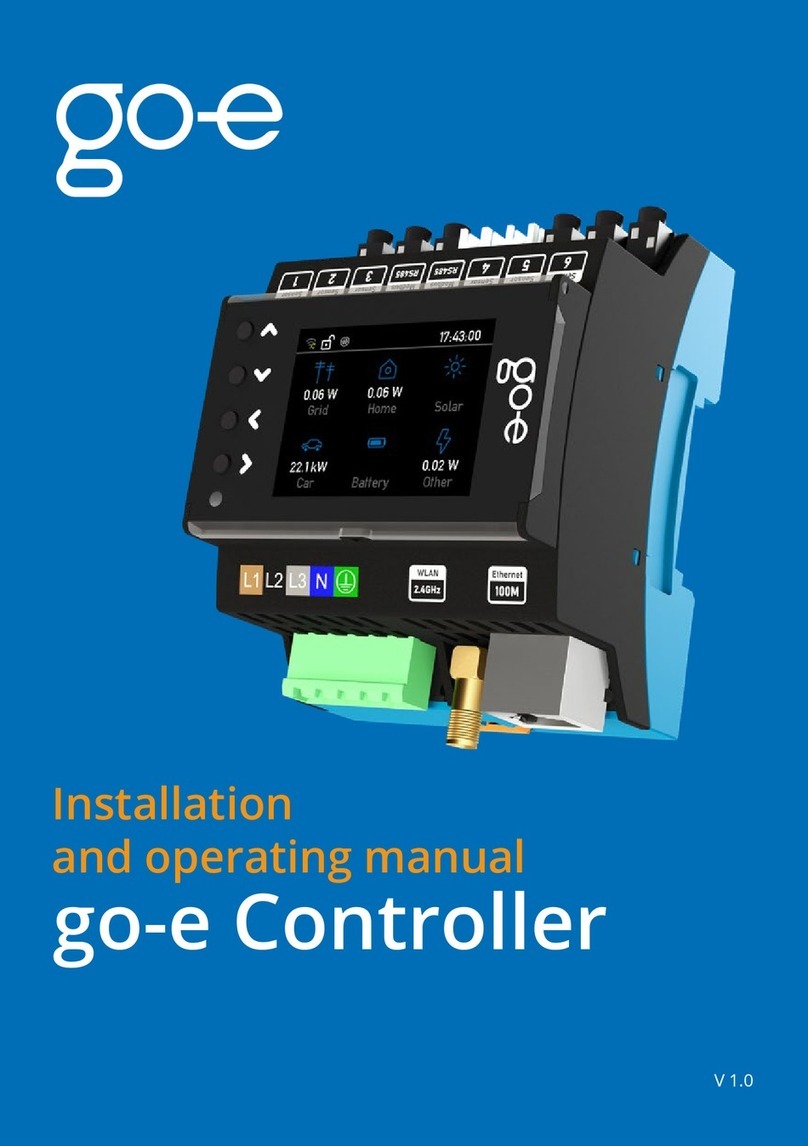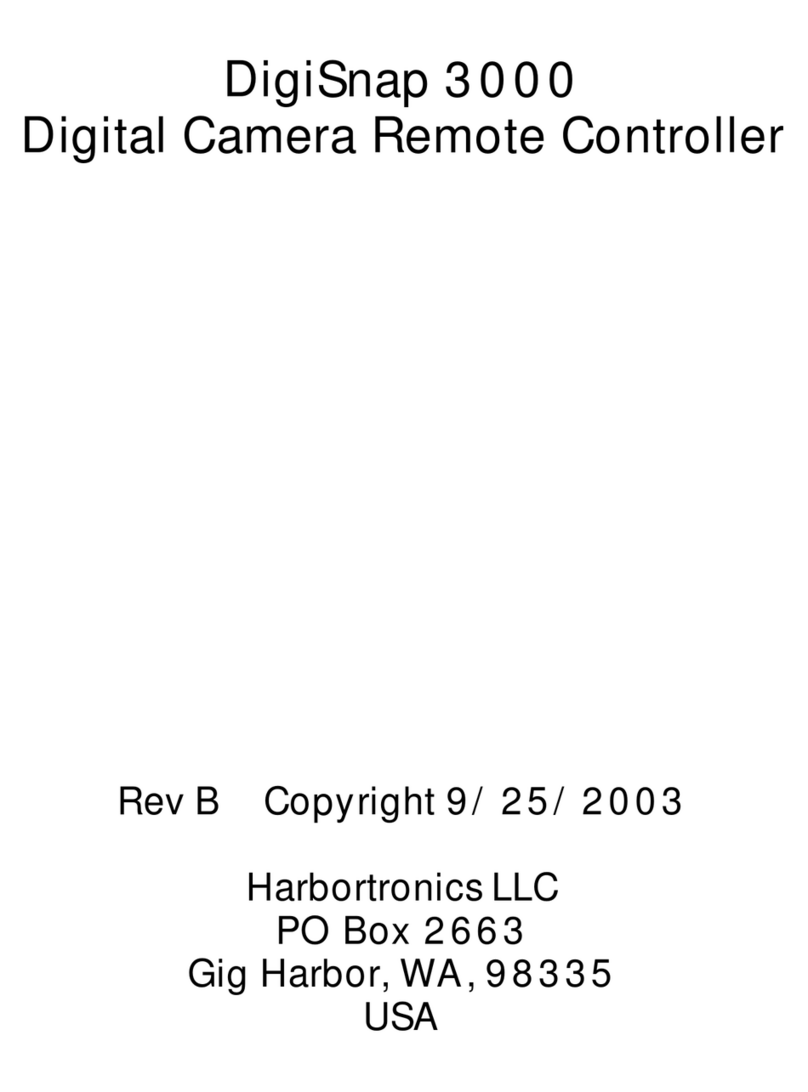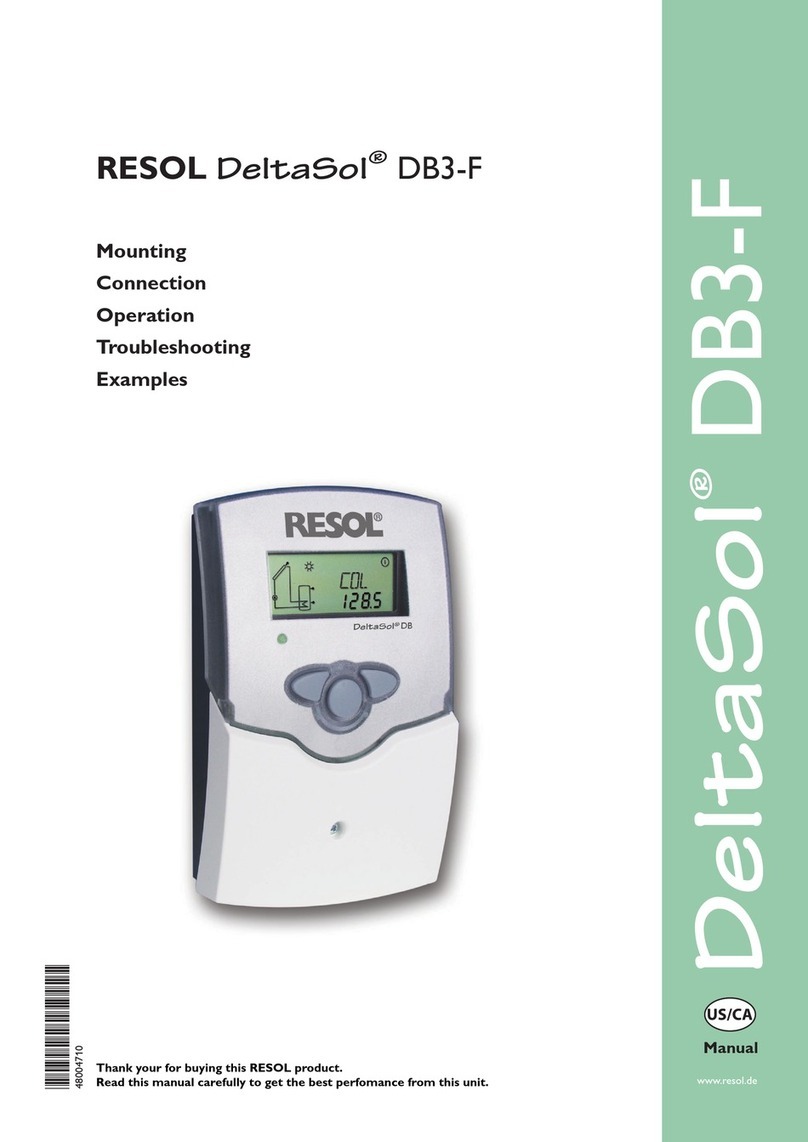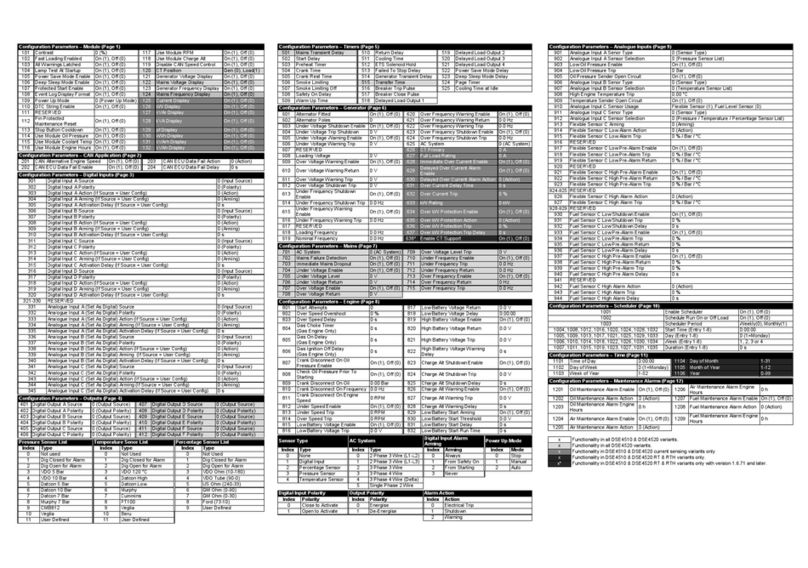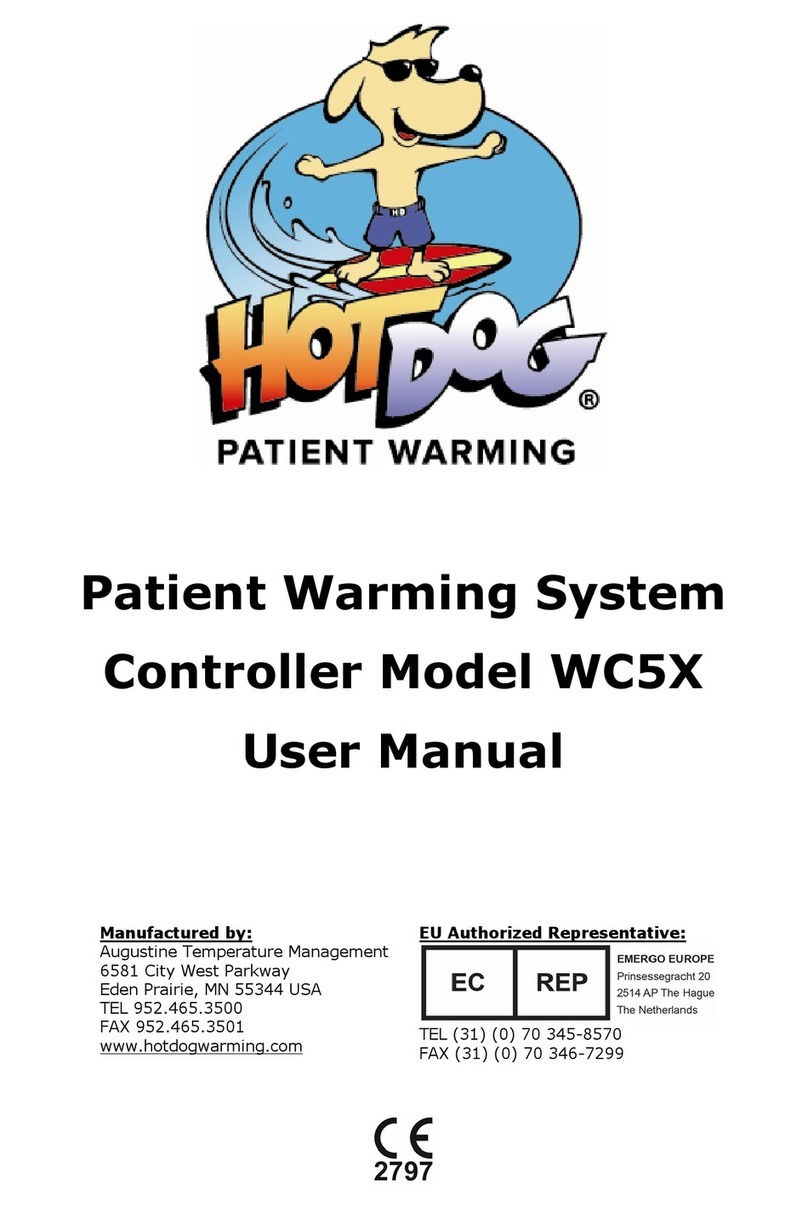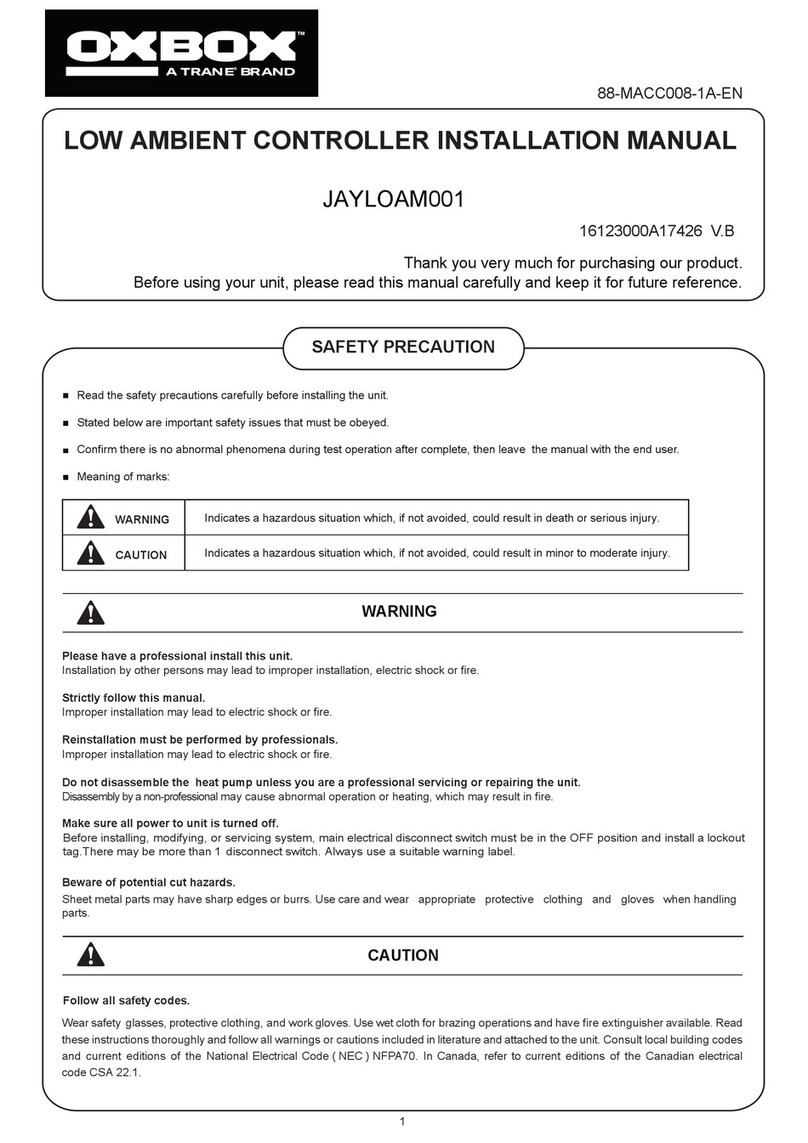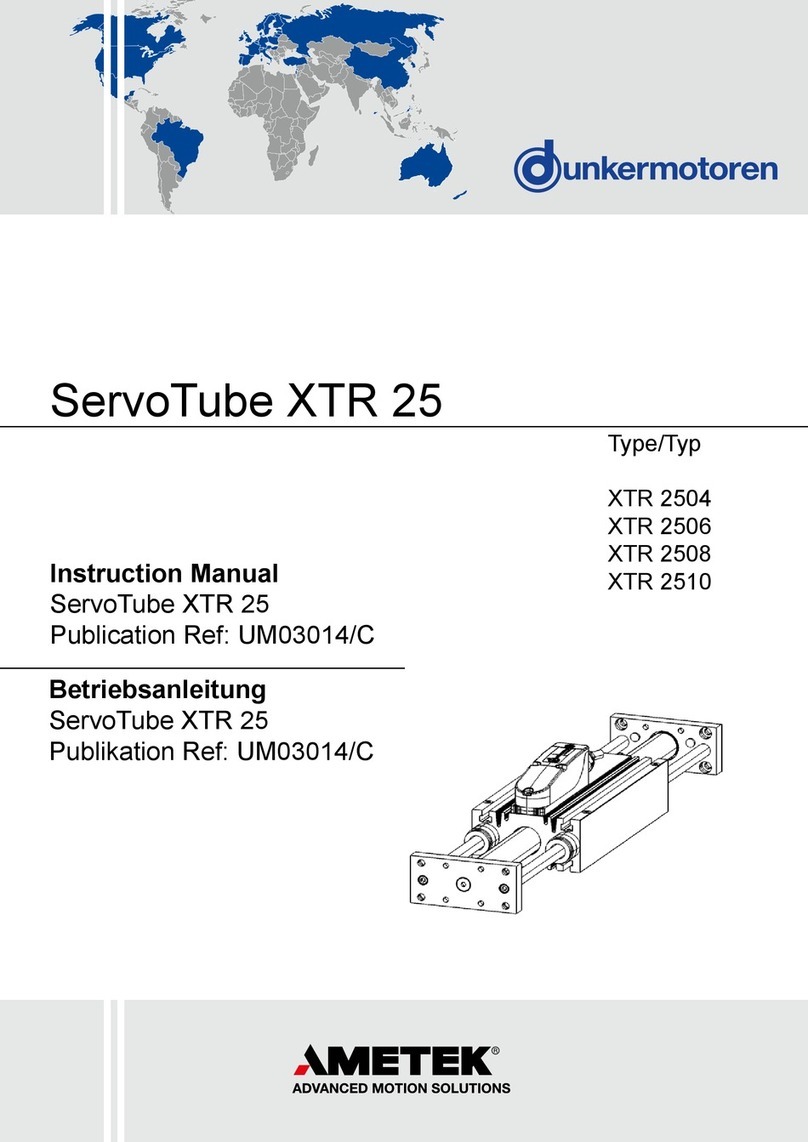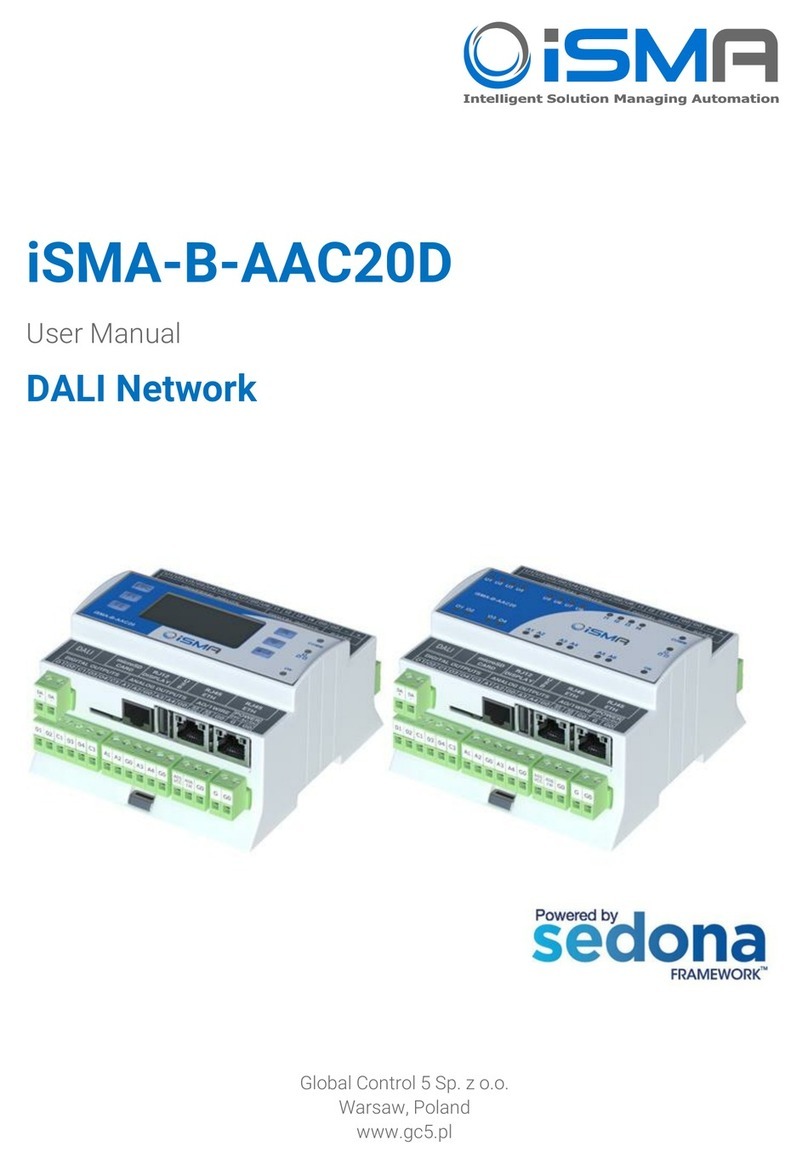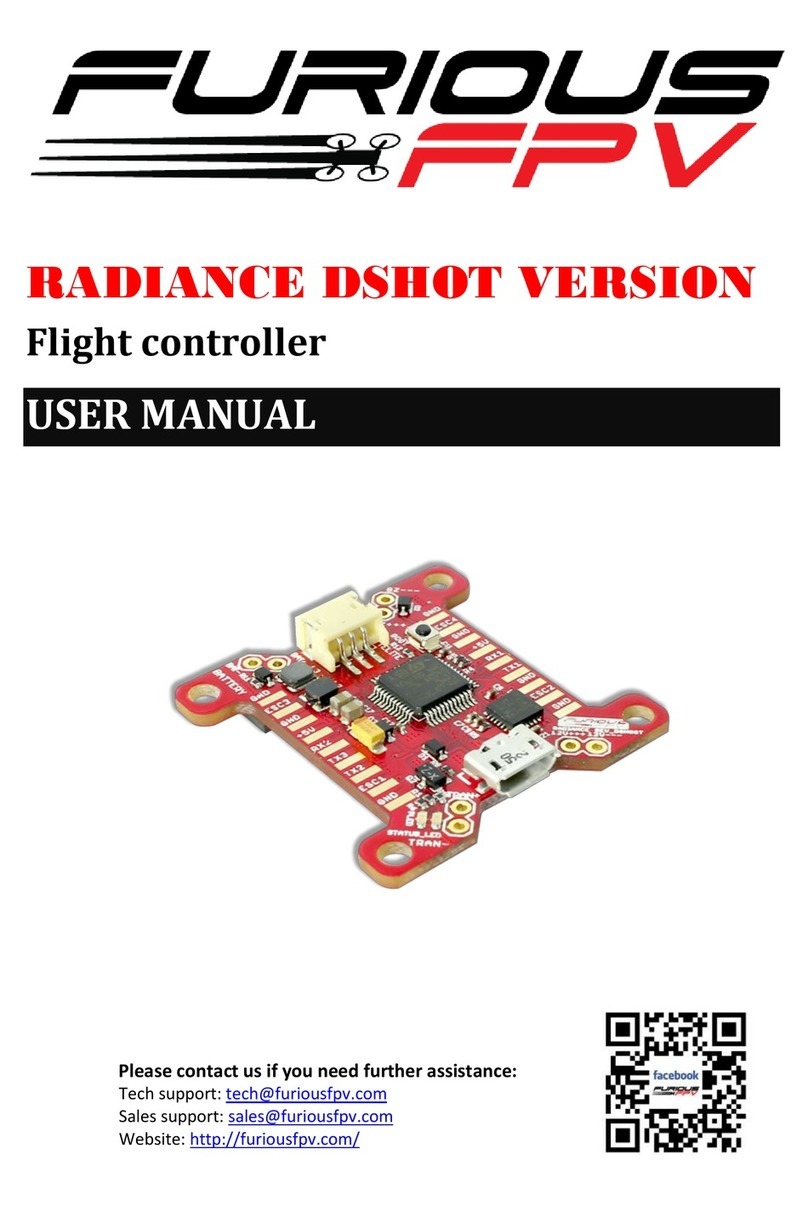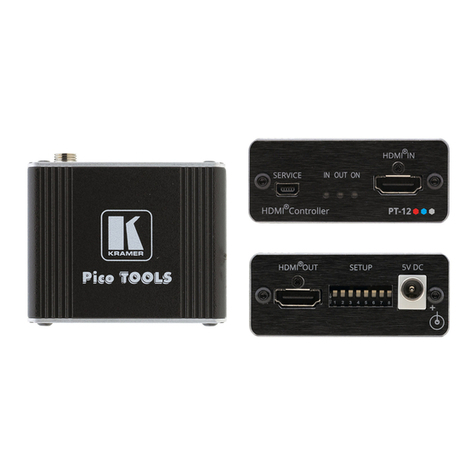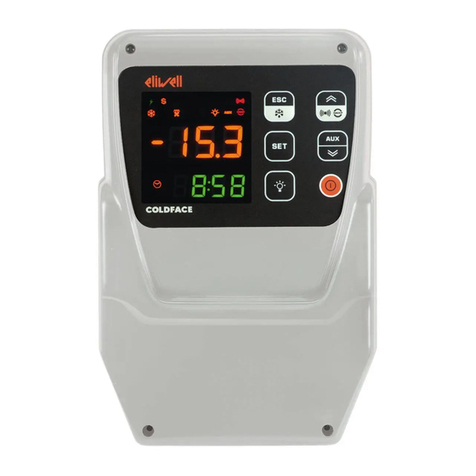GEFRAN-SIEI ARTDrive Vector V2 Series User manual

...... Instruction Manual
ARTDrive
ARTDrive
Vector AC Drives V2 series
400Vac Class
575Vac Class

Thank you for choosing this SIEI product.
We will be glad to receive any possible information which could help us improving this
Before using the product, read the safety instruction section carefully.
Keep the manual in a safe place and available to engineering and installation personnel
during the product functioning period.
GEFRAN S.p.A has the right to modify products, data and dimensions without notice.
The data can only be used for the product description and they can not be understood as
legally stated properties.
All rights reserved
This manual is updated according to software version 2.2XX.
Variation of the number replacing “X” have no influence on the functionality of the device.
The identification number of the software version can be read on the inverter nameplate
or on the label on the FLASH memories mounted on the regulation card.

ARTDrive V2 series - Instruction manual Table of Contents • 3
Table of Contents
Safety Symbol Legend - Légende des Signes de Sécurité ...................... 7
Chapter 0 - Safety Precautions / Precautions de Sécurité ..................... 8
Chapter 1 - Function and Feature (Overview) ....................................... 15
Chapter 2 - Inspection Procedure, Component Identification and
Standard Specification ....................................................... 16
2.1 Upon Delivery Inspection Procedures ................................................... 16
2.1.1 General ............................................................................................. 16
2.1.2 Inverter Type Designation ................................................................. 16
2.1.3 Nameplate ........................................................................................ 17
2.2 Component Identification ...................................................................... 18
2.3 Standard Specifications ........................................................................ 19
2.3.1 Permissible Environmental Conditions ............................................. 19
Disposal of the Device ........................................................................... 20
2.3.2 AC Input/Output Connection............................................................. 20
2.3.3 AC Input Current .............................................................................. 23
2.3.4 AC Output......................................................................................... 23
2.3.5 I/O and Encoder Specifications ........................................................ 25
2.3.6 Performance ..................................................................................... 26
Chapter 3 - Installation Guidelines......................................................... 27
3.1 Mechanical Specification ...................................................................... 27
3.2 Watts Loss, Heat Dissipation, Internal Fans and Minimum Cabinet
Opening Suggested for Cooling ............................................................. 30
3.2.1 Cooling Fans Power Supply .............................................................. 32
3.3 Installation Mounting Clearance............................................................ 33
3.4 Motors and Encoders ............................................................................ 34
3.4.1 Motors ............................................................................................. 34
3.4.1.1 AC Induction Motors .................................................................. 34
3.4.2 Encoders ....................................................................................... 36
Chapter 4 - Wiring Procedure ................................................................ 41
4.1 Accessing the Connectors .................................................................... 41
4.1.1 Removing the Covers ....................................................................... 41
4.2 Power Section ...................................................................................... 42
4.2.1 Terminal Assignment on Power Section / Cable Cross-Section ....... 43
4.3 Regulation Section ................................................................................ 45
4.3.1 RV33 Regulation Card ...................................................................... 45
4.3.2 Terminal Assignments on Regulation Section .................................. 48
4.3.3 Potentials of the Control Section ...................................................... 50
4.4 Serial Interface ...................................................................................... 52
4.4.1 Serial Interface Description .............................................................. 52

4 • Table of Contents ARTDrive V2 series - Instruction manual
4.4.2 RS 485 Serial Interface Connector Description ................................ 53
4.5 Standard Connection Diagram .............................................................. 54
4.5.1 ARTDrive Connections ..................................................................... 54
4.5.2 Parallel Connection on the AC (Input) and DC (Intermediate Circuit)
Side of Several Inverters .................................................................... 57
4.6 Circuit Protection .................................................................................. 58
4.6.1 External Fuses of the Power Section................................................ 58
4.6.2 External Fuses of the Power Section DC Input Side ......................... 59
4.6.3 Internal Fuses ................................................................................... 60
4.7 Chokes / Filters ..................................................................................... 60
4.7.1 AC Input Chokes ............................................................................... 61
4.7.2 Output Chokes .................................................................................. 61
4.7.3 Interference Suppression Filters ...................................................... 62
4.8 Braking Units ........................................................................................ 63
4.8.1 Internal Braking Unit ........................................................................ 64
4.8.2 External Braking Resistor ................................................................. 64
4.9 Buffering the Regulator Supply ............................................................. 69
4.10 Power Dip Ride Through Data and Restart Setup ................................ 72
4.11 Discharge Time of the DC-Link ............................................................ 76
Chapter 5 - Quick Start Up Guide ........................................................... 77
5.1 Functional Connection Diagram ............................................................ 77
5.2 Overview............................................................................................... 77
5.3 Pre-power Checks................................................................................. 78
5.4 Keypad Operation .................................................................................. 79
5.4.1 LEDs & Keys ..................................................................................... 79
5.4.2 Power Up ......................................................................................... 81
5.4.3 Menu & Parameter Index Displaying ................................................ 82
5.4.4 Moving Inside a Menu ..................................................................... 82
5.4.5 Using Keypad Help (Help is not avaible for some menu entries ....... 83
5.4.6 Drive Menu - Main Level .................................................................. 84
5.5 Quick Start-up Procedure ...................................................................... 85
5.5.1 Motor Potentiometer and Jog .......................................................... 88
5.6 Additional Information (Configuration of the OK Relay) ......................... 89
5.6.1 Analog Input Tuning ......................................................................... 89
5.6.2 Configuration of the OK Relay........................................................... 90
5.7 Encoder Verification ............................................................................. 91
5.8 I/O Configuration ................................................................................... 91
Chapter 6 - Parameter Description ........................................................ 93
6.1 General Considerations ......................................................................... 93
6.1.2 Block Functions................................................................................ 95
6.1.3 Signal Normalization ....................................................................... 99
6.2 Parameter Legend ............................................................................... 102
A DISPLAY ................................................................................................. 103
B STARTUP ............................................................................................... 109

ARTDrive V2 series - Instruction manual Table of Contents • 5
C INTERFACE ............................................................................................ 125
D REF&RAMP ............................................................................................ 173
E REG PARAM ........................................................................................... 193
F SPEED REG ............................................................................................ 207
G TORQUE ................................................................................................. 227
H FLUX ...................................................................................................... 235
I FUNCTION.............................................................................................. 239
L ALARM CFG ........................................................................................... 249
N APC CARD ............................................................................................. 277
O APPL CFG .............................................................................................. 285
P CUSTOM ................................................................................................ 305
Q SERVICE ................................................................................................. 315
Chapter 7 - Appendix............................................................................ 317
7.1 Manual Tuning of the Current Regulator .............................................. 317
7.2 Manual Tuning of the Flux Regulator ................................................... 318
7.3 IGBT Voltage Output Distortion ........................................................... 321
7.3.1 Sensorless Gains Profile Tuning ..................................................... 323
7.4 How Perform the Speed Loop in Field Oriented or Sensorless Vect .... 326
7.5 - Applications Examples for the PID Function ..................................... 328
7.5.1 - Control of Nip Rolls with Dancer .................................................. 328
7.5.2 Control of Nip Rolls with Loading Cell ............................................ 330
7.5.3 Control of Winders/Unwinders with Dancer .................................. 333
7.5.4 Parameters Referring to the Function for the Calculation of the
Starting Diameter ............................................................................. 336
7.5.5 Use of the Diameter Sensor ........................................................... 338
7.5.6 Pressure Control for Pumps and Extruders ..................................... 340
7.5.6.1 Machine Data .......................................................................... 340
7.5.6.2 Input/Output ............................................................................. 340
7.5.6.3 Parameters .............................................................................. 341
7.5.7 Generic PID .................................................................................... 342
7.5.7.1 Parameters .............................................................................. 342
7.5.8 Application Note: Dynamic Change of the PI Block Integral Gain .. 343
Chapter 8 - Throubleshooting ............................................................... 345
8.1 Using Keypad Alarm List ..................................................................... 345
8.2 List of Error Alarm Events ................................................................... 347
8.2.1 Configuration Errors ....................................................................... 347
8.2.2 Database Errors (DB Errors) ........................................................... 349
8.2.3 List of Error Codes for All Autotune Procedures ............................. 351
8.2.4 List of Regulation Alarm Events ..................................................... 352
8.2.5 Hints on How to Correct Some Regulation Alarms Events ............. 354
8.2.6 Hints on How to Correct Other Faulty Conditions ........................... 356
Chapter 9 - Pick Lists ........................................................................... 359

6 • Table of Contents ARTDrive V2 series - Instruction manual
Chapter 10 - Preventive Maintenance ................................................. 377
10.1 Introduction ...................................................................................... 377
10.2 Maintenance Schedule ..................................................................... 377
10.3 Maintenance Record ......................................................................... 377
10.4 Equipment/Material Needed ............................................................. 377
10.5 Safety Equipment.............................................................................. 377
10.6 Typical Maintenance Tools ................................................................ 378
10.7 Power-On Checks ............................................................................. 378
10.8 Power-Off Checks ............................................................................. 378
10.9 Before Starting Maintenance ............................................................ 378
10.9.1 Dust Removal ............................................................................... 379
10.9.2 Loose Connections ....................................................................... 380
10.9.3 Damaged Insulation ..................................................................... 380
Chapter 11 - EMC Directive.................................................................. 381
Chapter 12 - Index ................................................................................ 382
Menues and Parameters ....................................................................... 382

ARTDrive V2 series - Instruction Manual Chapter 0 Safety Precautions • 0-7
Safety Symbol Legend - Légende des Signes de Sécurité
Commands attention to an operating procedure, practice, condition, or
statement which, if not strictly observed, could result in personal injury
or death.
Attire l’attention sur les modes d’utilisation et les procédés et conditions
d’exploitation qui, en cas d’inobservation, pourraient entraîner des blessures
corporelles ou la mort.
Commands attention to an operating procedure, practice, condition, or
statement which, if not strictly observed, could result in damage or
destruction of equipment.
Theseriousnessofthe injuries andofthe damages whichcouldbe caused
by the non- observance of such indications, depends on the different
conditions. Anyway, the instructions given below should always be
followed with the highest attention.
Attire l’attention sur les modes d’utilization et les procédés et conditions
d’exploitation qui, en cas d’inobservation, pourraient entraîner la détérioration
ou la destruction des appareils.
La gravité des blessures et des dommages matériels possibles dépendent de
différent facteurs. Toutefois, les instructions mentionées ci-dessous devraient
être toujours suivies avec la plus grande attention.
NOTE!Commands attention to an operating procedure, practice, condition, or
statement that must be highlighted.
Attire l’attention sur les modes d’utilization et les procédés et conditions
d’exploitation qui présentent un intéret particulier.

0-8 • Chapter 0 Safety Precautions ARTDrive V2 series - Instruction manual
Chapter 0 - Safety Precautions / Precautions de Sécurité
NOTE!The terms “Inverter”, “Controller” and “Drive” are sometimes used
interchangably throughout the industry. We will use the term “Drive” in this
document.
Les mots “Inverter”, “Controller” et “Drive” sont interchangeables dans le
domaine industriel. Nous utiliserons dans ce manuel seulement le mot “Drive”.
- According to the EEC standards theARTDrive and accessories must
be used only after checking that the machine has been produced
using those safety devices required by the 89/392/EEC set of rules.
Drive systems cause mechanical motion. It is the responsibility of
the user to insure that any such motion does not result in an unsafe
condition. Factory provided interlocks and operating limits should
not be bypassed or modified.
- Never open the device or covers while the AC Input power supply is
switched on. Minimum time to wait before working on the terminals
or internal devices is listed in section 4.11 on Quick Start Up Guide.
- If the front plate has to be removed because the ambient temperature
is higher than 40 degrees, the user has to ensure that no occasional
contact with live parts will occur.
- Always connect the Drive to the protective ground (PE) via the marked
connection terminals (PE2) and the housing (PE1). Adjustable
Frequency Drives andAC Input filters have ground discharge currents
greater than 3.5 mA. EN 50178 specifies that with discharge currents
greater than 3.5 mA the protective conductor ground connection (PE1)
must be fixed type and doubled for redundancy.
- The drive may cause accidental motion in the event of a failure, even
if it is disabled, unless it has been disconnected from the AC input
feeder.
- Selon les normes EEC, les drives ARTDrive et leurs accessoires doivent
être employés seulement après avoir verifié que la machine ait été produit
avec les même dispositifs de sécurité demandés par la réglementation
89/392/EEC concernant le secteur de l’industrie.
Les systèmes provoquent des mouvements mécaniques. L’utilisateur est
responsable de la sécurité concernant les mouvements mécaniques. Les
dispositifs de sécurité prévues par l’usine et les limitations operationelles
ne doivent être dépassés ou modifiés.
- Ne jamais ouvrir l’appareil lorsqu’il est suns tension. Le temps minimum
d’attente avant de pouvoir travailler sur les bornes ou bien à l’intérieur de
l’appareil est indiqué dans la section 4.11 (Quick Start Up Guide).
- Si la plaque frontale doit être enlevée pour un fonctionnement avec la
température de l’environnement plus haute que 40°C, l’utilisateur doit
s’assurer, par des moyens opportuns, qu’aucun contact occasionnel ne
puisse arriver avec les parties sous tension.
- L’appaeil peut rédémarrer de façon accidentel en cas d’anomalie, sauf s’il
a été déconnecté du reseau.
- Effectuer toujours des connexions de terre (PE) par le biais des bornes
(PE2) et du chassis (PE1). Le courant de dispersion vers la terre est
supérieur à 3,5 mA. Selon EN 50178 il faut prévoir dans ces cas une
double connexion à terre.

ARTDrive V2 series - Instruction Manual Chapter 0 Safety Precautions • 0-9
Electrical Shock and Burn Hazard:
When using instruments such as oscilloscopes to work on live equipment,
the oscilloscope’s chassis should be grounded and a differential amplifier
input should be used. Care should be used in the selection of probes
and leads and in the adjustment of the oscilloscope so that accurate
readings may be made. See instrument manufacturer’s instruction book
for proper operation and adjustments to the instrument.
Décharge Èlectrique et Risque de Brúlure :
Lors de l’utilisation d’instruments (par example oscilloscope) sur des systémes
enmarche,lechassis del’oscilloscopedoitêtre reliéàlaterre etunamplificateur
différentiel devrait être utilisé en entrée.
Les sondes et conducteurs doivent être choissis avec soin pour effectuer les
meilleuresmesuresàl’aided’unoscilloscope.Voirlemanueld’instructionpour
une utilisation correcte des instruments.
Fire and Explosion Hazard:
Fires or explosions might result from mounting Drives in hazardous areas
such as locations where flammable or combustible vapors or dusts are
present. Drives should be installed away from hazardous areas, even if
used with motors suitable for use in these locations.
Risque d’incendies et d’explosions:
L’utilisation des drives dans des zônes à risques (présence de vapeurs ou de
poussières inflammables), peut provoquer des incendies ou des explosions.
Les drives doivent être installés loin des zônes dangeureuses, et équipés de
moteurs appropriés.
Strain Hazard:
Improper lifting practices can cause serious or fatal injury. Lift only with
adequate equipment and trained personnel.
Attention à l’Élévation:
Une élévation inappropriée peut causer des dommages sérieux ou fatals. Il
doit être élevé seulement avec des moyens appropriés et par du personnel
qualifié.
Electric Shock Hazard:
- Drives and motors must be ground connected according to the NEC.
- Replace all covers before applying power to the Drive. Failure to do
so may result in death or serious injury.
- Adjustable frequency drives are electrical apparatus for use in
industrial installations. Parts of the Drives are at high voltage during
operation. The electrical installation and the opening of the device
should therefore only be carried out by qualified personnel. Improper
installation of motors or Drives may therefore cause the failure of the
device as well as serious injury to persons or material damage. Follow
the instructions given in this manual and observe the local and
national safety regulations applicable.
Cas de Décharge Èlectrique:
- Tous les moteurs et les drives doivent être mis à la terre selon le Code
Electrique National ou équivalent.
- Remettretouslescapots avant demettresoustensionledrive. Des erreurs

0-10 • Chapter 0 Safety Precautions ARTDrive V2 series - Instruction manual
peuvent provoquer de sérieux accidents ou même la mort.
- Les drives à fréquence variable sont des dispositifs électriques utilisés
dans des installations industriels. Une partie des drives sont sous tension
pendantl’operation.L’installationélectrique et l’ouverture desdrivesdevrait
être executé uniquement par du personel qualifié. De mauvaises
installations de moteurs ou de drives peuvent provoquer des dommages
materielsoublesserdespersonnes.Ondoitsuivirlesinstructions donneés
dans ce manuel et observer les régles nationales de sécurité.
Power supply and grounding
In case of a three phase supply not symmetrical to ground, an insulation
loss of one of the devices connected to the same network can cause
functional problem to the drive, if the use of a delta /star transformer is
avoided.
1 GEFRAN-SIEI drives are designed to be powered from standard three
phase lines that are electrically symmetrical with respect to ground
(TN or TT network).
2 In case of supply with IT network, the use of wye/delta transformer is
mandatory, with a secondary three phase wiring referred to ground.
Please refer to the following connection sample.
Alimentation puissance et mise à la terre
Si le réseau n'est pas équilibré par rapport à la terre et qu'il n'y a pas de
transformateur raingle/étoile, une mauvaise isolation d'un appareil électrique
connecté au même réseau que le variateur peut lui causer des troubles de
fonctionnement.
1 LesvariateursGEFRAN-SIEIsont prévuspourêtrealimentés parunréseau
triphasé équilibré avec un régime de neutre standard (TN ou TT).
2 Si le régime de neutre est IT, nous vous recommendons d'utiliser un
tranformateur triangle/étoile avec point milieu ramené à la terre
Vous pouvez trouver ci-après des exemples de câblage.
Safety
ground
L1
L2
L3
Earth
U1/L1
V1/L2
W1/L3
U2/T1
V2/T2
W2/T3
PE2/
All wires (including motor ground) must
be connected inside the motor terminal box
AC OUTPUT
CHOKE
AC Main Supply
AC INPUT
CHOKE
PE1/

ARTDrive V2 series - Instruction Manual Chapter 0 Safety Precautions • 0-11
- Do not connect power supply voltage that exceeds the standard
specification voltage fluctuation permissible. If excessive voltage is
applied to the Drive, damage to the internal components will result.
- Do not operate the Drive without the ground wire connected. The
motor chassis should be grounded to earth through a ground lead
separate from all other equipment ground leads to prevent noise
coupling.
- The grounding connector shall be sized in accordance with the NEC
or Canadian Electrical Code. The connection shall be made by a UL
listed or CSA certified closed-loop terminal connector sized for the
wire gauge involved. The connector is to be fixed using the crimp
tool specified by the connector manufacturer.
- Do not perform a megger test between the Drive terminals or on the
control circuit terminals.
- Because the ambient temperature greatly affects Drive life and
reliability, do not install the Drive in any location that exceeds the
allowable temperature. Leave the ventilation cover attached for
temperatures of 104° F (40° C) or below.
- If the Drive’s Fault Alarm is activated, consult the chapter 8,
TROUBLESHOOTING, and after correcting the problem, resume
operation. Do not reset the alarm automatically by external sequence,
etc.
- Be sure to remove the desicant dryer packet(s) when unpacking the
Drive. (If not removed these packets may become lodged in the fan
or air passages and cause the Drive to overheat).
- The Drive must be mounted on a wall that is constructed of heat
resistant material. While the Drive is operating, the temperature of
the Drive's cooling fins can rise to a temperature of 194° F (90°C).
- Do not touch or damage any components when handling the device.
Changing of isolation gaps or removing the isolation covers is not
permissible.
- Protect the device from disallowed environmental conditions
(temperature, humidity, shock etc.)
- Novoltage should beconnectedto the output ofthefrequency inverter
(terminals U2, V2 W2). The parallel connection of several frequency
inverters via the outputs and the direct connection of the inputs and
outputs (bypass) are not permissible.
- A capacitative load (e.g. Var compensation capacitors) should not be
connected to the output of the frequency inverter (terminals U2, V2,
W2).
- The electrical commissioning should only be carried out by qualified
personnel, who are also responsible for the provision of a suitable
ground connection and a protected power supply feeder in
accordance with the local and national regulations. The motor must
be protected against overloads.
- No dielectric tests should be carried out on parts of the frequency
inverter. A suitable measuring instrument (internal resistance of at
least 10 kΩΩ
ΩΩ
Ω/V) should be used for measuring the signal voltages.
- Ne pas raccorder de tension d’alimentation dépassant la fluctuation de
tension permise par les normes.
Dans le cas d’ une alimentation en tension excessive, des composants
internes peuvent être endommagés.

0-12 • Chapter 0 Safety Precautions ARTDrive V2 series - Instruction manual
- Ne pas faire fonctionner le drive sans prise de terre. Le chassis du moteur
doit être mis à la terre à l’aide d’un connecteur de terre separé des autres
pour éviter le couplage des perturbations. Le connecteur de terre devrait
être dimensionné selon la norme NEC ou le Canadian Electrical code. Le
raccordement devrait être fait par un connecteur certifié et mentionné à
boucle fermé par les normes CSA et UL et dimensionné pour l’épaisseur
ducablecorrespondant.Le connecteur doitêtrefixéal’aide d’uninstrument
de serrage specifié par le producteur du connecteur.
- Ne pas exécuter un test megger entre les bornes du drive ou entre les
bornes du circuit de contrôle.
- Étant donné que la température ambiante influe sur la vie et la fiabilité du
drive,onnedevraitpasinstaller le drive dansdesplacesoulatemperature
permise est dépassée. Laisser le capot de ventilation en place pour
températures de 104°F (40°C) ou inférieures.
- Si la Fault Alarm du drive est activée, consulter la section 8 du manuel
concernantlesdéfauts et après avoircorrigél’erreur,reprendrel’opération.
Ne pas réiniliatiser l’alarme automatiquement par une séquence externe,
etc….
- Lors du déballage du drive, retirer le sachet déshydraté. (Si celui-ci n’est
pas retiré, il empêche la ventilation et provoque une surchauffe du drive).
- Le drive doit être monté sur un mur construit avec des matériaux résistants
àlachaleur. Pendant lefonctionnementdudrive, latempératuredesailettes
du dissipateur thermique peut arriver à 194°F (90°).
- Manipulerl’appareildefaçon à nepastoucher ou endommagerdesparties.
Il n’est pas permis de changer les distances d’isolement ou bien d’enlever
des matériaux isolants ou des capots.
- Protéger l’appareil contre des effets extérieurs non permis (température,
humidité, chocs etc.).
- Aucunetensionnedoitêtre appliquée surlasortieduconvertisseur (bornes
U2, V2 et W2). Il n’est pas permis de raccorder la sortie de plusieurs
convertisseursenparallèle, ni d’effectueruneconnexiondirectedel’entrée
avec la sortie du convertisseur (Bypass).
- Aucunechargecapacitivene doitêtreconnectéeà lasortieduconvertisseur
(bornesU2,V2et W2) (parexempledescondensateursde mise enphase).
- La mise en service électrique doit être effectuée par un personnel qualifié.
Ce dernier est responsable de l’existence d’une connexion de terre
adéquate et d’une protection des câbles d’alimentation selon les
prescriptions locales et nationales. Le moteur doit être protégé contre la
surcharge
- Il ne faut pas éxécuter de tests de rigidité diélectrique sur des parties du
convertisseurs. Pour mesurer les tensions, des signaux, il faut utiliser des
instruments de mesure appropriés (résistance interne minimale 10 k
Ω
/V).

ARTDrive V2 series - Instruction Manual Chapter 0 Safety Precautions • 0-13
NOTE!If the Drives have been stored for longer than two years, the operation of
the DC link capacitors may be impaired. Before commissioning devices
that have been stored for long periods, connect them to a power supply
for two hours with no load connected in order to regenerate the
capacitors, (the input voltage has to be applied without enabling the
inverter).
En cas de stockage des convertisseurs pendant plus de deux ans, il faut tenir
compte du fait que les condensateurs du circuit intermédiaire gardent leurs
caractéristiques d’origine seulement s’ils sont alimentés avant deux ans, à
partir de leur date de fabrication. Avant la mise en service des appareils, qui
sont restés stockés aussi longtemps, il est conseillé d’alimenter les
convertisseurs pendant au moins deux heures, pour récupérer les
caractéristiques d’origine des condensateurs : appliquer une tension d’entrée
sans activer le convertisseur (Disable).

0-14 • Chapter 0 Safety Precautions ARTDrive V2 series - Instruction manual

ARTDrive V2 series - Instruction manual Chapter 1 Function and Feature • 15
Chapter 1 - Function and Feature (Overview)
The ARTDrive is a field-oriented vector Drive with excellent speed control
properties and a high torque.
Available control modes are:
- Field oriented with speed sensor
- Field oriented without speed sensor (Sensorless vect mode)
- V/f control
Space vector modulation keeps the noise level to a minimum.
- Output voltage up to 98% of input voltage
- Self tuning procedure for current, and speed regulators
The Drives are fitted with IGBTs (insulated gate bipolar transistors).
The output is protected against ground fault and phase to phase output short.
Regulator power supply via switched-mode power supply unit from the DC Bus
circuit. Power supply backed-up in the event of short-term voltage dips.
Galvanic isolation between control section and command terminals.
Analog inputs designed as differential inputs.
Simple operation of the drive:
- via the terminal strip
- via the user-friendly keypad
- via the PC configuration tool supplied and the RS485 serial interface
- via a fieldbus connection (optional): PROFIBUS-DP, CANopen/DeviceNet.
Fault register storing the last ten fault alarms with the associated lifetime.
Overload control
Engaging a running motor
Three freely configurable analog inputs + two analog outputs on the standard
device
Expansion of the analog / digital outputs and analog / digital inputs via option
cards
Speed and torque current regulation possible
Adaptive speed regulation
Speed-related alarms
Motor potentiometer function (Increase/Decrease speed by command)
Jog operation
8 internal speed reference values
4 internal accel/decel/emergency ramps
2-wires/3-wires control
Local/Remote control
PID control
Controlled stop in case of AC mains power loss.
Active ride-through of AC line power dips
Configurable commands interface: edge sensitive; pulse start/stop.
Function block scheme execution available as standard (supported by PC
configuration tool function block editor)
Diagnostic capture buffer

16 • Chapter 2 Inspection Procedure,... ARTDrive V2 series - Instruction Manual
Chapter 2 - Inspection Procedure, Component Identification and
Standard Specification
2.1 Upon Delivery Inspection Procedures
2.1.1 General
A high degree of care is taken in packing the AVy Drives and preparing them for
delivery. They should only be transported with suitable transport equipment (see
weight data on tables 3.1.1 and 3.1.2). Observe the instructions printed on the
packaging. This also applies when the device is unpacked and installed in the
control cabinet.
Upon delivery, check the following:
- the packaging for any external damage
- whether the delivery note matches your order.
Open the packaging with suitable tools. Check whether:
- any parts were damaged during transport
- the device type corresponds to your order
In the event of any damage or of an incomplete or incorrect delivery please
notify the responsible sales offices immediately.
The devices should only be stored in dry rooms within the specified temperature
ranges .
NOTE!A certain degree of moisture condensation is permissible if this arises from
changes in temperature (see section 2.3.1, “Permissible Environmental
Conditions”). This does not, however, apply when the devices are in operation.
Always ensure that there is no moisture condensation in devices that are
connected to the power supply!
2.1.2 Inverter Type Designation
The technical specification of the AVy Drive is stated in the type code. Example:
Figure 2.1.2.1: Inverter Type Designation
X
[-4] -5
= software
= 230/480Vac series, =575Vac series
standard
X= NOT integrated braking unit , B= Integrated braking unit
X= KCS led module, K= programmable KBS keypad
Drive kW or HP (-5 series) rating
Drive mechanical dimension
ART Drive series
AVy1030-XXX-5
The AVy Drive selected depends on the rated current of the motor. The rated
output current at the appropriate service conditions must be greater than or
equal to the motor current required.
The speed of the three-phase motor is determined by the number of pole pairs
and the frequency (nameplate, data sheet) of the motor concerned. Operation
above the rated frequency and speed of the motor must take into account the

ARTDrive V2 series - Instruction Manual Chapter 2 Inspection Procedure,... • 17
specifications given by the manufacturer losses (bearings, unbalance etc.). This
also applies to temperature specifications for continuous operation under 20 Hz
(poor motor ventilation, not applicable to motors with external ventilation).
2.1.3 Nameplate
Check that all the data stated in the nameplate enclosed to the inverter correspond
to what has been ordered.
Figure 2.1.3.1: Identification Nameplate
Type : AVy 2003 -KBX-5 Inverter Drive S/N 02135387
Inp: 575 Vac 50/60Hz 3Ph Zmin=1%
4.5A@575Vac With Line Choke
Out : 0-575Vac 400Hz 3Ph 3Hp @ 575Vac
4.5A@575V Cont. Serv.
4.1A@575V Ovld. 150% 60s
LISTED
INDUSTRIAL CONTROL EQUIPMENT
Type: Inverter model S/N: Serial number
Inp: Power supply voltage - AC Input current -
Out: Output voltage - Output current - Output frequency
NOTE!CSA approval for AVy-...-5 series only !
Figure 2.1.3.2: Firmware & Card Revision Level Nameplate
Firmware HW release S/N 0062330 Prod.
Release D F P R S BU SW. CFG CONF
2.200 0.A 0.A 0.A 1.000 D1
Figure 2.1.3.3: Nameplates Position

18 • Chapter 2 Inspection Procedure,... ARTDrive V2 series - Instruction Manual
2.2 Component Identification
An AVy Drive converts the constant voltage and frequency of a three-phase
power supply into a direct voltage and then converts this direct voltage into a
new three-phase power supply with a variable voltage and frequency. This variable
three-phase power supply can be used for the infinitely variable adjustment of
the speed of three-phase asynchronous motors.
Figure 2.2.1: Basic Setup of Frequency Inverter
12
345
6
78
1 AC Input supply voltage
2 AC Mains choke (see section 4.7.1)
3 Three-phase rectifier bridge Converts the alternating current into
direct current using a three phase full
wave bridge.
4 DC intermediate circuit With charging resistor and smoothing
capacitor.
Direct voltage (UDC) = √2 x Mains
voltage (ULN)
5 IGBT inverter Converts direct voltage to a variable
three-phase alternating voltage with
variable frequency.
6 Configurable control section Modules for open-loop and closed-loop
control of the power section. This is
used for processing control commands,
reference values and actual values.
7 Output voltage: Three-phase, variable alternating
voltage.
8 Encoder For speed feedback (see section 3.4.2)

ARTDrive V2 series - Instruction Manual Chapter 2 Inspection Procedure,... • 19
2.3 Standard Specifications
2.3.1 Permissible Environmental Conditions
ENVIRONMENT
TAAmbient temperature [°C] ________ 0 … +40; +40…+50 with derating
TAAmbient temperature [°F] ________ 32 … +104; +104…+122 with derating
Installation location ______________ Pollution degree 2 or better (free from direct sunlight, vibration,
dust, corrosive or inflammable gases, fog, vapour oil and dripped
water, avoid saline environment)
Degree of protection ______________ IP20
IP54 for the cabinet with externally mounted heatsink for size
type 1007 to 3150 (230/480Vac series) and 2002 to 3020
(575Vac series)
Installation altitude _______________ Up to 2000 m (6560 feet) above sea level; over 1000 m (3280
feet) a current reduction of 1.2% for every 100 m (328 feet) of
additional height applies .
Temperature:
operation 1) _________________________ 0…40°C (32°…104°F)
operation 2) _________________________ 0…50°C (32°…122°F)
storage _________________ -25…+55°C (-13…+131°F), class 1K4 per EN50178
-20…+55°C (-4…+131°F), for devices with keypad
transport ________________ -25…+70°C (-13…+158°F), class 2K3 per EN50178
-20…+60°C (-4…+140°F), for devices with keypad
Air humidity:
operation ________________ 5 % to 85 %, 1 g/m3to 25 g/m3without moisture condensation
or icing (Class 3K3 as per EN50178)
storage _________________ 5% to 95 %, 1 g/m3to 29 g/m3 (Class 1K3 as per EN50178)
transport ________________ 95 % 3), 60 g/m34)
Air pressure:
operation ________________ [kPa] 86 to 106 (class 3K3 as per EN50178)
storage _________________ [kPa] 86 to 106 (class 1K4 as per EN50178)
transport ________________ [kPa] 70 to 106 (class 2K3 as per EN50178)
STANDARD
Climatic conditions _______________ IEC 68-2 Part 2 and 3
Clearance and creepage ___________ EN 50178, UL508C, UL840 degree of pollution 2
Vibration _______________________ IEC68-2 Part 6
EMC compatibility ________________ EN61800-3 (see “EMC Guidelines” instruction book)
Approvals ______________________ CE, UL, cUL, CSA (for AVy-...-5 series only).
1) Parameter Ambient temp = 40°C (104°)
Ambient temp = 0 ... 40°C (32°...104°F)
Over 40°C: - current reduction of 2% of rated output current per K
- remove front plate (better than class 3K3 as per EN50178)
2) Parameter Ambient temp = 50°C (122°F)
Ambient temp = 0 ... 50°C (32°...122°F)
Current derated to 0.8 rated ouput current
Over 40°C (104°): removal of the top cover (better than class 3K3 as per EN50178)
3) Greatest relative air humidity occurs with the temperature @ 40°C (104°F) or if the
temperature of the device is brought suddenly from -25 ...+30°C (-13°...+86°F).
4) Greatest absolute air humidity if the device is brought suddenly from 70...15°C (158°...59°F).

20 • Chapter 2 Inspection Procedure,... ARTDrive V2 series - Instruction Manual
Disposal of the Device
The AVy Drive can be disposed as electronic scraps in accordance with the
currently valid national regulations for the disposal of electronic parts.
The plastic covering of the Drives, up to sizes 3150 (230/480Vac series) and
2002 to 3020 (575Vac series), are recyclable: the material used is >ABS+PC<.
2.3.2 AC Input/Output Connection
- AVy...-4 (230/480Vac)
Suitable for use on a circuit capable of delivering not more than (*) rms (see
table below) Symmetrical Amperes, 400 Vac +10% maximum:
Models Max input short circuit current
1007 to 4370 (*) : 5000 A
5450 to 71320 (*) : 10000 A
81600 (*) : 18000 A
- AVy...-5 (575Vac)
Suitable for use on a circuit capable of delivering not more than (*) rms (see
table below) Symmetrical Amperes, 575 Vac +10% maximum:
Models Max input short circuit current
2002 to 4040 (*) : 5000 A
5050 to 7150 (*) : 10000 A
8200 (*) : 18000 A
Also the insertion of a Mains inductance should be take into account (see
chapter 4.7.1).
No external connection of the regulator power supply to the existing AC Input
supply is required since the power supply is taken from the DC Link circuit.
However, a 24V backup input for the regulator power supply can be used if it is
desired to monitor status and diagnostic information across a power failure.
When commissioning, set the B0B.00 - Mains voltage parameter to the value
of the AC Input voltage concerned. This automatically sets the threshold for the
Undervoltage and Overvoltage alarms to the appropriate levels.
NOTE!A “Sequencer reset” command is required to restart the drive when input voltage
is restored.
NOTE!In some cases AC Input chokes, and possibly noise suppression filters should
be fitted on the AC Input side of the device in order to operate the AVy Drive.
See chapter “Chokes/Filters”.
Adjustable Frequency Drives and AC Input filters have ground discharge
currents greater then 3.5 mA. EN 50178 specifies that with discharge currents
greater than 3.5 mA the protective conductor ground connection (PE1) must
be fixed type.
This manual suits for next models
2
Table of contents

